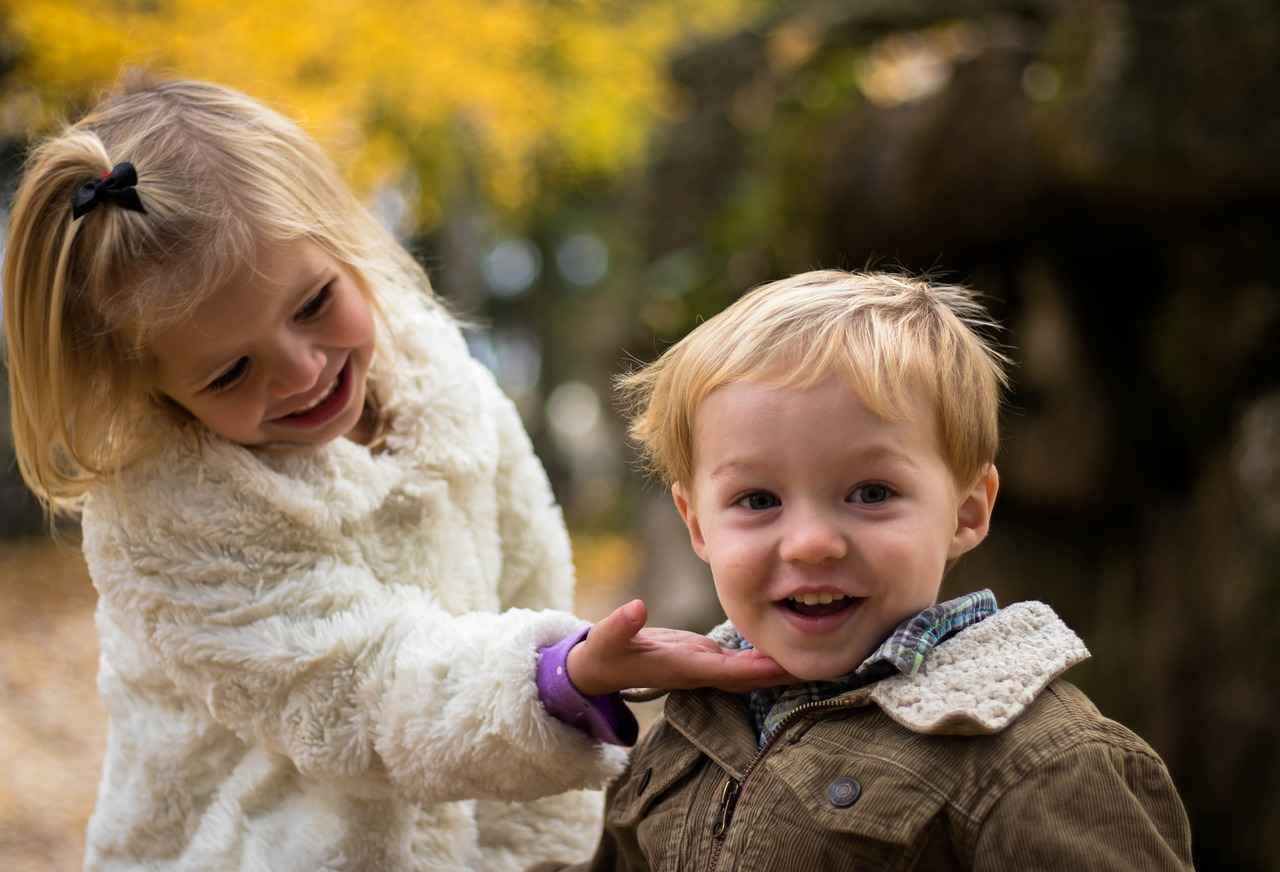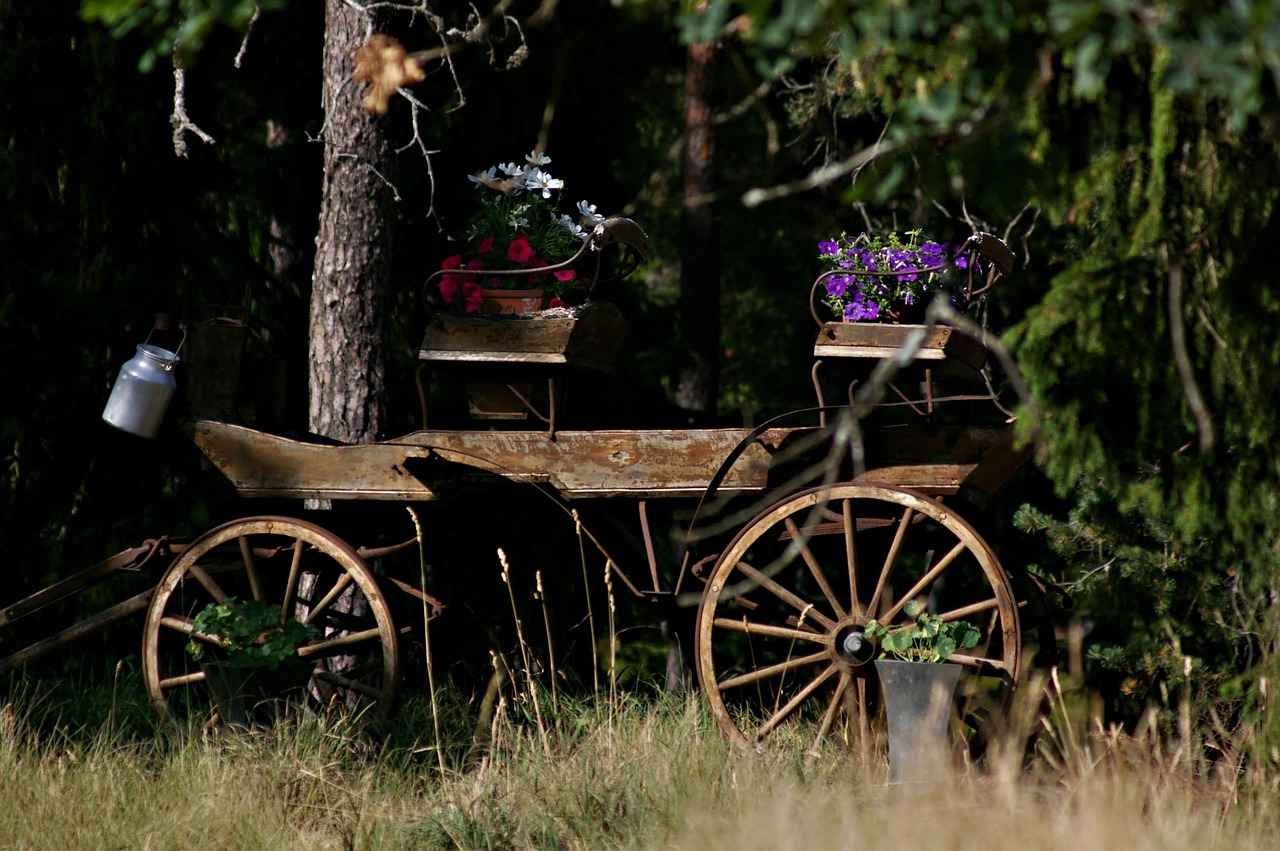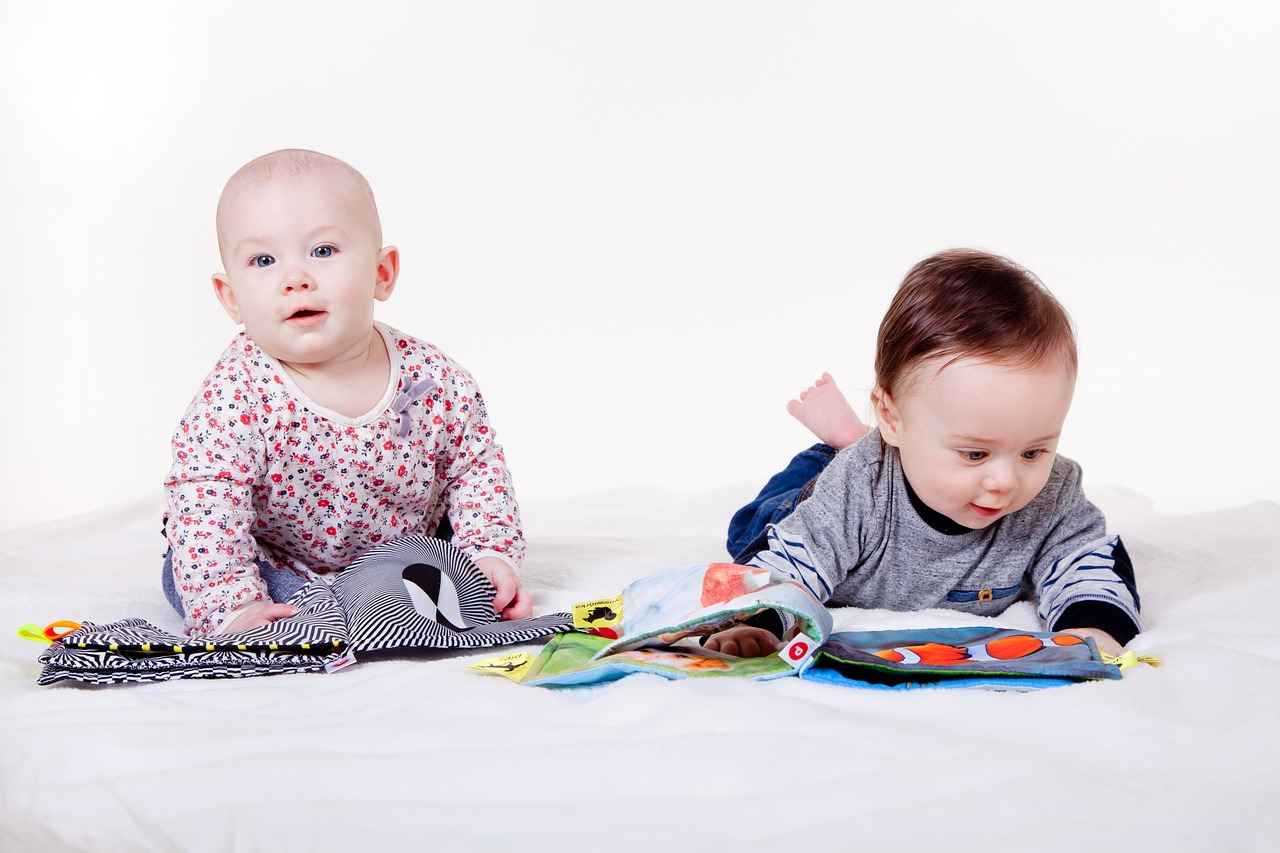This article delves into the world of timeless classic films for children, highlighting their lasting charm and the valuable lessons they convey. These movies have a unique ability to captivate audiences of all ages, making them beloved favorites across generations.
The Importance of Classic Films for Kids
Classic films are not just entertaining; they also offer valuable life lessons and foster family bonding. By introducing children to these cinematic treasures, parents can encourage a love for storytelling while creating lasting memories together.
Top Classic Films for Children
- The Wizard of Oz (1939) – This enchanting musical follows Dorothy’s adventures in the magical land of Oz, imparting lessons about friendship, courage, and self-discovery.
- Mary Poppins (1964) – A delightful blend of live-action and animation, this film showcases the whimsical escapades of a magical nanny, filled with unforgettable songs and heartwarming moments.
- Chitty Chitty Bang Bang (1968) – This musical adventure features a fantastical car and a captivating story, enchanting young viewers with its imaginative plot and catchy melodies.
Lessons Learned from Classic Films
Classic films often teach children about bravery, kindness, and the importance of friendship. These lessons are conveyed through engaging narratives and memorable characters that resonate with young audiences.
Friendship and Loyalty
Many classic films emphasize the significance of friendship, demonstrating how loyalty and support can help characters overcome obstacles and achieve their dreams.
Imagination and Adventure
These films encourage children to embrace their imagination, highlighting the importance of adventure and creativity in their personal growth and exploration.
The Role of Animation in Classic Films
Animation has played a pivotal role in captivating young audiences with vibrant visuals and imaginative storytelling, transcending age barriers and appealing to all.
Disney’s Golden Age of Animation
Disney’s early animated films set the benchmark for storytelling and artistry, creating timeless characters that continue to resonate with audiences today.
Impact of Animated Classics on Modern Cinema
The influence of classic animated films is evident in contemporary cinema, inspiring new generations of filmmakers and animators to craft engaging narratives.
Why Classic Movies Remain Relevant Today
Despite the passage of time, classic films continue to resonate with children and families, offering universal themes and relatable characters that transcend generations.
How to Introduce Classic Films to Children
Introducing classic films to children can be a rewarding experience. Here are some tips:
- Choosing the Right Film for Different Ages – Select films based on a child’s age and maturity to ensure a positive viewing experience.
- Encouraging Family Movie Nights – Create a tradition around family movie nights, enhancing bonding and providing opportunities for discussions.
Conclusion: The Timeless Joy of Classic Films
Classic films continue to provide joy, entertainment, and valuable lessons for children. Their enduring appeal ensures they remain cherished parts of family traditions for years to come.

The Importance of Classic Films for Kids
Classic films hold a special place in the hearts of many, especially when it comes to children. They are not just a source of entertainment; they are a gateway to valuable life lessons and cherished memories. These timeless movies serve as cultural touchstones that foster family bonding, allowing parents and children to experience the magic of storytelling together.
One of the most significant aspects of classic films is their ability to impart important life lessons. Through engaging narratives and relatable characters, children learn about friendship, courage, and the importance of being true to oneself. These themes resonate across generations, making them relevant even today. For instance, films like The Wizard of Oz teach children about the importance of bravery and the value of friendship, while Mary Poppins emphasizes the joy of imagination and creativity.
Moreover, classic films often evoke a sense of nostalgia for parents, allowing them to share their favorite childhood memories with their children. This shared experience not only strengthens family bonds but also introduces kids to a world of storytelling that is rich and diverse. The vibrant characters and imaginative plots encourage children to think creatively and dream big.
In addition to providing entertainment, classic films can also serve as excellent conversation starters. Parents can discuss the various themes and lessons presented in these movies, helping children develop critical thinking skills. This interaction enhances the viewing experience and makes it more meaningful.
In conclusion, classic films are much more than just movies; they are an essential part of childhood that offers valuable lessons, fosters family connections, and ignites a love for storytelling. By introducing children to these timeless classics, parents can ensure that the magic of cinema continues to inspire and educate future generations.

Top Classic Films for Children
This section showcases a selection of must-watch classic films that not only entertain but also resonate with young audiences through their captivating narratives, unforgettable characters, and timeless themes. These films have endured the test of time, making them essential viewing for children and families alike.
| Film Title | Release Year | Key Themes |
|---|---|---|
| The Wizard of Oz | 1939 | Friendship, Courage, Adventure |
| Mary Poppins | 1964 | Imagination, Family, Magic |
| Chitty Chitty Bang Bang | 1968 | Adventure, Creativity, Whimsy |
The Wizard of Oz tells the enchanting story of Dorothy, who embarks on an adventure in the magical land of Oz. This film teaches children about the importance of friendship and the courage needed to face challenges.
Mary Poppins is a delightful blend of live-action and animation, featuring a magical nanny who brings joy and wonder to a family in need. Its memorable songs and imaginative storytelling have made it a beloved classic across generations.
Chitty Chitty Bang Bang captivates young viewers with its whimsical plot and catchy tunes, inviting them to dream big and embrace their creativity.
These films not only provide entertainment but also impart valuable life lessons, making them essential for any child’s viewing experience. By introducing children to these classic films, parents can foster a love for storytelling and create cherished family memories.
The Wizard of Oz (1939)
The Wizard of Oz (1939) is a timeless classic that has enchanted audiences for generations. This beloved musical fantasy transports viewers to the whimsical land of Oz, where young Dorothy Gale embarks on a remarkable journey. The film is not only a visual spectacle but also a profound exploration of themes such as friendship, courage, and the importance of home.
The story begins in Kansas, where Dorothy dreams of a more exciting life. After a tornado sweeps her away to Oz, she meets a cast of unforgettable characters: the Scarecrow, the Tin Man, and the Cowardly Lion. Together, they journey to meet the Wizard, hoping to fulfill their individual desires. Along the way, they learn valuable lessons about self-acceptance and the power of teamwork.
The film is renowned for its catchy songs, including the iconic “Over the Rainbow,” which has become synonymous with the film itself. The music enhances the storytelling, making the emotional moments resonate even more with the audience. The combination of live-action and vibrant Technicolor animation creates a magical experience that captivates both children and adults alike.
Since its release, The Wizard of Oz has left an indelible mark on popular culture. It has inspired countless adaptations, parodies, and references in various media. The film’s message about the importance of home and the journey of self-discovery continues to resonate with new generations, making it a staple in family film collections.
The Wizard of Oz remains a beloved musical fantasy that transcends time. Its enchanting story, memorable characters, and powerful lessons ensure its place in the hearts of audiences, proving that sometimes, the greatest adventures lead us back to where we belong.
The Wizard of Oz
is a timeless classic that has enchanted audiences for generations. Released in 1939, this beloved musical fantasy follows the journey of a young girl named Dorothy as she travels through the magical land of Oz. With its vibrant characters and unforgettable songs, it imparts important lessons about friendship, courage, and the power of believing in oneself.
Why Is The Wizard of Oz Still Relevant?
- Enduring Themes: The film explores themes of friendship, loyalty, and self-discovery, making it relatable for both children and adults.
- Memorable Characters: From the Scarecrow to the Cowardly Lion, each character teaches valuable life lessons.
- Magical Storytelling: The enchanting narrative captivates the imagination, encouraging viewers to dream big.
Key Lessons from The Wizard of Oz
- Friendship: The bond between Dorothy and her friends illustrates the importance of loyalty and support.
- Courage: The Cowardly Lion’s journey shows that bravery can come in many forms.
- Self-Belief: Dorothy’s realization that “there’s no place like home” emphasizes the value of self-acceptance.
How to Introduce The Wizard of Oz to Children
- Age Appropriateness: Ensure children are ready for the film’s themes and visuals.
- Family Discussions: Encourage conversations about the lessons learned after watching.
- Interactive Activities: Engage kids with activities related to the film, like crafting or storytelling.
Conclusion: The Wizard of Oz remains a cherished classic, offering timeless joy and valuable lessons for children. Its universal themes and captivating storytelling ensure it will continue to be a beloved part of family traditions for years to come.
follows Dorothy on her journey through the magical land of Oz, teaching lessons about friendship and courage.
Old Movies for Kids: Classic Films That Are Still Fun
This article explores timeless classic films for children, showcasing their enduring appeal and the lessons they impart. Discover why these movies remain favorites across generations.
The Importance of Classic Films for Kids
Classic films offer valuable life lessons, entertainment, and nostalgia. They serve as cultural touchstones, fostering family bonding and introducing children to storytelling.
Top Classic Films for Children
- The Wizard of Oz (1939) – A beloved musical fantasy, The Wizard of Oz follows Dorothy on her journey through the magical land of Oz, teaching lessons about friendship and courage.
- Mary Poppins (1964) – Mary Poppins combines live-action and animation, showcasing the magical nanny’s adventures. Its enchanting songs and whimsical storytelling make it a perennial favorite among children.
- Chitty Chitty Bang Bang (1968) – This musical adventure features a magical car and a whimsical plot, captivating young viewers with its imaginative storytelling and catchy tunes.
Lessons Learned from Classic Films
- Friendship and Loyalty – Many classic films emphasize the significance of friendship, illustrating how loyalty and support can help characters overcome challenges and achieve their goals.
- Imagination and Adventure – Classic movies encourage children to embrace their imagination, highlighting the importance of adventure and creativity in personal growth and exploration.
The Role of Animation in Classic Films
- Disney’s Golden Age of Animation – Disney’s early animated films set the standard for storytelling and artistry, creating timeless characters that resonate with audiences of all ages.
- Impact of Animated Classics on Modern Cinema – The influence of classic animated films can be seen in contemporary cinema, inspiring new generations of filmmakers and animators to create engaging narratives.
Why Classic Movies Remain Relevant Today
Despite the passage of time, classic films continue to resonate with children and families, offering universal themes and relatable characters that transcend generations.
How to Introduce Classic Films to Children
- Choosing the Right Film for Different Ages – Selecting films based on a child’s age and maturity level ensures a positive viewing experience and fosters an appreciation for classic cinema.
- Encouraging Family Movie Nights – Creating a family movie night tradition around classic films can enhance bonding, provide opportunities for discussions, and create lasting memories.
Conclusion: The Timeless Joy of Classic Films
Classic films continue to provide joy, entertainment, and valuable lessons for children. Their enduring appeal ensures they remain cherished parts of family traditions for years to come.
Mary Poppins (1964)
Mary Poppins is a timeless classic that has enchanted audiences since its release in 1964. This musical fantasy film, produced by Disney, combines live-action and animation, creating a magical experience that captivates both children and adults alike. The story follows the adventures of a whimsical nanny, Mary Poppins, played by the iconic Julie Andrews, who brings joy and order to the lives of the Banks children.
The film is celebrated for its enchanting songs, such as “Supercalifragilisticexpialidocious” and “A Spoonful of Sugar“, which have become cultural staples. Mary Poppins teaches valuable lessons about the importance of family, imagination, and the power of positivity. The film’s unique blend of live-action and animated sequences allows viewers to experience a world where anything is possible, making it a favorite for generations.
- Family Values: The film emphasizes the importance of family bonding and understanding.
- Imagination: It encourages children to embrace their creativity and see the magic in everyday life.
- Kindness: Mary Poppins exemplifies the impact of kindness and compassion on those around her.
Despite being over half a century old, Mary Poppins remains relevant today. Its themes of love, adventure, and imagination resonate with new generations. The film’s ability to blend humor, music, and life lessons ensures that it continues to be a beloved choice for family movie nights.
In conclusion, Mary Poppins is more than just a film; it is a cherished part of cinematic history. Its enchanting storytelling and memorable characters continue to inspire and entertain audiences, proving that classic films can stand the test of time.
Mary Poppins
is a timeless classic that continues to enchant audiences of all ages. This beloved film, released in 1964, combines live-action and animation to tell the story of a magical nanny who brings joy and adventure to the lives of the Banks children. In this article, we will explore the enduring appeal of , its cultural significance, and the valuable lessons it imparts.
is not just a film; it is a cultural phenomenon. The character of Mary Poppins, portrayed by the iconic Julie Andrews, has become synonymous with magic and whimsy. The film showcases a blend of delightful songs, imaginative storytelling, and vibrant animation, making it a favorite among children and adults alike.
- Imagination: The film encourages children to embrace their creativity and imagination.
- Family Values: It highlights the importance of family bonding and understanding.
- Adventure: Mary Poppins takes the children on fantastical adventures, teaching them life lessons along the way.
The themes of are timeless. In a world that often feels chaotic, the film reminds us of the importance of joy, laughter, and the magic in everyday life. The lessons learned from Mary Poppins about kindness, responsibility, and the power of imagination continue to resonate with new generations.
Introducing to children can be a delightful experience. Consider hosting a family movie night where you can watch the film together, discuss its themes, and even sing along to its memorable songs. This not only enhances the viewing experience but also fosters a love for classic cinema.
is more than just a film; it is a cherished part of family traditions. Its magical storytelling and valuable life lessons ensure that it will remain a beloved classic for years to come. Whether you are revisiting it or introducing it to a new generation, the joy of is truly timeless.
combines live-action and animation, showcasing the magical nanny’s adventures. Its enchanting songs and whimsical storytelling make it a perennial favorite among children.
Old Movies for Kids: Classic Films That Are Still Fun
This article explores timeless classic films for children, showcasing their enduring appeal and the lessons they impart. Discover why these movies remain favorites across generations.
The Importance of Classic Films for Kids
Classic films offer valuable life lessons, entertainment, and nostalgia. They serve as cultural touchstones, fostering family bonding and introducing children to storytelling.
Top Classic Films for Children
- The Wizard of Oz (1939): A beloved musical fantasy, The Wizard of Oz follows Dorothy on her journey through the magical land of Oz, teaching lessons about friendship and courage.
- Mary Poppins (1964): Mary Poppins combines live-action and animation, showcasing the magical nanny’s adventures. Its enchanting songs and whimsical storytelling make it a perennial favorite among children.
- Chitty Chitty Bang Bang (1968): This musical adventure features a magical car and a whimsical plot, captivating young viewers with its imaginative storytelling and catchy tunes.
Lessons Learned from Classic Films
- Friendship and Loyalty: Many classic films emphasize the significance of friendship, illustrating how loyalty and support can help characters overcome challenges and achieve their goals.
- Imagination and Adventure: Classic movies encourage children to embrace their imagination, highlighting the importance of adventure and creativity in personal growth and exploration.
The Role of Animation in Classic Films
Animation has played a crucial role in classic films, captivating children with vibrant visuals and imaginative storytelling that transcend age barriers.
Disney’s Golden Age of Animation
Disney’s early animated films set the standard for storytelling and artistry, creating timeless characters that resonate with audiences of all ages.
Impact of Animated Classics on Modern Cinema
The influence of classic animated films can be seen in contemporary cinema, inspiring new generations of filmmakers and animators to create engaging narratives.
Why Classic Movies Remain Relevant Today
Despite the passage of time, classic films continue to resonate with children and families, offering universal themes and relatable characters that transcend generations.
How to Introduce Classic Films to Children
- Choosing the Right Film for Different Ages: Selecting films based on a child’s age and maturity level ensures a positive viewing experience and fosters an appreciation for classic cinema.
- Encouraging Family Movie Nights: Creating a family movie night tradition around classic films can enhance bonding, provide opportunities for discussions, and create lasting memories.
Conclusion: The Timeless Joy of Classic Films
Classic films continue to provide joy, entertainment, and valuable lessons for children. Their enduring appeal ensures they remain cherished parts of family traditions for years to come.
Chitty Chitty Bang Bang (1968)
Chitty Chitty Bang Bang (1968) is a delightful musical adventure that has enchanted audiences for generations. This film tells the whimsical story of a magical car that not only flies but also floats, taking its passengers on a journey filled with excitement and wonder. The film’s imaginative storytelling and catchy tunes make it a perfect choice for young viewers, igniting their creativity and sense of adventure.
The plot revolves around the charming inventor, Caractacus Potts, who restores an old race car. He soon discovers that this is no ordinary vehicle; it has magical abilities that lead him and his children, Jeremy and Jemima, on a series of thrilling escapades. The film artfully blends fantasy with reality, captivating children with its vibrant characters and engaging narrative.
Key Themes and Messages
- Imagination: The film encourages children to dream big and embrace their creativity, highlighting the power of imagination in transforming the ordinary into the extraordinary.
- Family Bonds: Chitty Chitty Bang Bang emphasizes the importance of family and teamwork as the Potts family navigates challenges together, reinforcing the value of love and support.
- Adventure: The thrilling escapades teach young viewers about bravery and the joy of exploration, inspiring them to seek out their own adventures.
With its enchanting songs, such as “Chitty Chitty Bang Bang” and “You Two,” the film leaves a lasting impression. The catchy melodies are not only enjoyable but also serve to enhance the storytelling, making it a memorable experience for children and adults alike.
In conclusion, Chitty Chitty Bang Bang remains a timeless classic that continues to capture the hearts of young audiences. Its blend of magic, music, and meaningful lessons ensures that it will be cherished by families for many years to come.
Lessons Learned from Classic Films
Classic films hold a special place in the hearts of many, not only for their entertainment value but also for the important life lessons they impart. These films often serve as a mirror reflecting the values and ethics of society, teaching children about bravery, kindness, and the value of friendship in ways that are both engaging and memorable.
Through captivating storytelling and relatable characters, classic films provide children with essential moral lessons. For instance, the journey of characters often illustrates the importance of courage. Young viewers learn that facing fears and overcoming obstacles is a crucial part of growing up. Films like The Wizard of Oz not only entertain but also encourage children to be brave in the face of adversity.
Another valuable lesson is the significance of kindness. Many classic films showcase acts of compassion, teaching children that being kind to others can lead to positive outcomes. For example, Mary Poppins emphasizes the impact of kindness on family dynamics and personal relationships, showing that a little compassion can go a long way.
Furthermore, classic films often highlight the importance of friendship. They depict how friends support each other through thick and thin, demonstrating that loyalty and teamwork can help overcome the toughest challenges. Movies like Chitty Chitty Bang Bang illustrate the power of friendship in embarking on adventures and achieving dreams.
In summary, classic films are not just a source of entertainment; they are rich with life lessons that resonate with children. By teaching valuable principles such as bravery, kindness, and the significance of friendship, these timeless movies continue to shape the moral compass of young audiences, ensuring their relevance across generations.
Friendship and Loyalty
are central themes in many classic films, particularly those aimed at children. These movies often showcase how strong bonds between characters can lead to remarkable adventures and the ability to overcome obstacles. In a world filled with challenges, the portrayal of friendship serves as a powerful reminder of the importance of loyalty, support, and trust.
Classic films like The Wizard of Oz and Mary Poppins exemplify these themes beautifully. In The Wizard of Oz, Dorothy’s journey through the land of Oz is not just about finding her way home, but also about the friendships she forms along the way. The Scarecrow, Tin Man, and Cowardly Lion each represent different facets of loyalty and support, showing that true friends help each other grow and face fears.
Similarly, in Mary Poppins, the titular character teaches the Banks children the value of friendship and family. The whimsical adventures they share highlight how loyalty can create lasting bonds that transcend the ordinary. These films encourage young viewers to cherish their friendships and understand that having a supportive circle can make all the difference in overcoming personal challenges.
Moreover, classic films often depict friendships that are tested by adversity, but ultimately prevail. This narrative arc not only entertains but also instills vital life lessons about resilience and the importance of standing by one another during tough times. Children learn that loyalty is not just about being there during the good times, but also about supporting friends when they need it the most.
In conclusion, the themes of friendship and loyalty in classic films resonate with audiences of all ages. They remind us that these values are essential for personal growth and success. As children watch these timeless stories, they are inspired to build strong, loyal friendships that will serve them well throughout their lives.
Imagination and Adventure
play crucial roles in the development of children, and classic movies are a wonderful medium through which these themes are conveyed. These films not only entertain but also inspire young minds to explore their creativity and embark on their own adventures.
Classic films, such as The Wizard of Oz and Mary Poppins, transport children to fantastical worlds where imagination knows no bounds. In these narratives, characters face challenges that require them to think creatively and embrace their adventurous spirit. This exposure is vital for personal growth, as it encourages children to step outside their comfort zones and explore new possibilities.
Moreover, the enchanting stories and vibrant characters in these movies serve as a catalyst for children to engage in imaginative play. When children see characters overcoming obstacles through creativity and courage, they are more likely to emulate these traits in their own lives. This not only fosters a sense of adventure but also instills a belief in the power of imagination.
Classic films also highlight the importance of teamwork and friendship in the context of adventure. Characters often band together to achieve common goals, teaching children the value of collaboration and support. For instance, the journey of Dorothy and her friends in The Wizard of Oz showcases how working together can lead to extraordinary outcomes.
In conclusion, classic movies are more than just entertainment; they are vital tools for nurturing a child’s imagination and adventurous spirit. By introducing children to these timeless films, parents can help cultivate a love for creativity and exploration that will benefit them throughout their lives.
| Classic Film | Key Themes |
|---|---|
| The Wizard of Oz | Friendship, Courage, Imagination |
| Mary Poppins | Adventure, Family, Creativity |
| Chitty Chitty Bang Bang | Imagination, Innovation, Teamwork |
- Encourages Creative Thinking: Classic films inspire children to think outside the box.
- Promotes Adventure: They encourage children to seek out new experiences.
- Builds Social Skills: Through shared adventures, children learn the importance of friendship and collaboration.
The Role of Animation in Classic Films
Animation has been a pivotal element in the realm of classic films, enchanting audiences of all ages with its vibrant visuals and imaginative storytelling. These animated features not only captivate children but also resonate with adults, creating a shared experience that transcends generational gaps. The magic of animation lies in its ability to bring fantastical worlds to life, making complex narratives accessible and engaging for young viewers.
From the early days of animation, filmmakers recognized the potential of this medium to tell stories that evoke emotion and imagination. The colorful characters and dynamic scenes in these films often serve as a gateway for children to explore important themes such as friendship, courage, and the significance of dreams. Classic animated films often feature memorable songs and enchanting visuals that remain etched in the minds of viewers long after the credits roll.
One of the most notable periods in animation history is the Golden Age of Disney, during which films such as The Little Mermaid and Snow White and the Seven Dwarfs not only set a high standard for artistic quality but also established storytelling techniques that are still used today. These films have become cultural landmarks, influencing countless filmmakers and animators who strive to capture the same magic in their own works.
Moreover, the impact of classic animated films extends beyond mere entertainment. They often serve as educational tools, introducing children to moral lessons and cultural values in a way that is relatable and enjoyable. As children watch their favorite characters embark on adventures, they learn about resilience, empathy, and the importance of community.
In conclusion, the role of animation in classic films is not just about entertainment; it is about creating lasting connections and imparting valuable lessons. These films continue to inspire new generations, reminding us of the power of creativity and the importance of storytelling in our lives.

Disney’s Golden Age of Animation
represents a pivotal era in cinematic history, showcasing the studio’s innovative storytelling and artistic brilliance. From the late 1920s to the early 1960s, Disney produced a series of animated films that not only captivated audiences but also set a benchmark for animation as a serious art form.
During this period, Disney introduced iconic characters such as Mickey Mouse, Snow White, and Cinderella, who have become cultural symbols recognized worldwide. These characters are not merely figures on a screen; they embody values and emotions that resonate with viewers of all ages. The storytelling techniques employed in these films often blend humor, adventure, and poignant moments, creating a rich tapestry that engages both children and adults.
One of the hallmarks of Disney’s early animated films is their exceptional artistry. The meticulous attention to detail in animation, combined with groundbreaking techniques like the use of Technicolor, revolutionized the industry. Films such as Snow White and the Seven Dwarfs, the first-ever full-length animated feature, showcased the potential of animation beyond short cartoons. This film not only achieved commercial success but also earned critical acclaim, paving the way for future animated features.
Moreover, Disney’s commitment to storytelling is evident in the timeless themes explored in these films. Love, friendship, and the triumph of good over evil are recurring motifs that resonate universally. For instance, Pinocchio teaches valuable lessons about honesty and integrity, while Fantasia combines classical music with imaginative animation, appealing to a broad spectrum of audiences.
As we reflect on Disney’s Golden Age of Animation, it becomes clear that these films have left an indelible mark on popular culture. They have influenced countless creators and continue to inspire new generations of animators and storytellers. The legacy of Disney’s early works is not just in their entertainment value but also in their ability to foster a sense of wonder and imagination.
In conclusion, Disney’s early animated films set a high standard for storytelling and artistry. They created timeless characters and narratives that continue to resonate with audiences today, ensuring their place in the hearts of viewers across generations.
Impact of Animated Classics on Modern Cinema
The legacy of classic animated films is profoundly felt in today’s cinema, shaping the creative landscape and inspiring filmmakers and animators across generations. These timeless masterpieces not only entertain but also lay the groundwork for storytelling techniques, character development, and visual artistry that continue to influence contemporary works.
Enduring Themes and Storytelling
Classic animated films often explore universal themes such as friendship, courage, and self-discovery. These themes resonate with audiences of all ages, providing a rich source of inspiration for modern storytellers. For instance, films like The Lion King and Beauty and the Beast have set benchmarks in character arcs and emotional depth, encouraging current creators to delve into complex narratives that engage viewers on multiple levels.
Visual Innovation and Artistic Techniques
The animation techniques developed during the golden age of animation have laid the foundation for today’s digital advancements. The meticulous hand-drawn artistry of classics such as Snow White and the Seven Dwarfs and Cinderella showcases a level of craftsmanship that modern animators strive to replicate, even as technology evolves. This blend of tradition and innovation fosters a unique visual language that captivates audiences.
Inspiration for New Generations
Filmmakers today draw inspiration from classic animated films, incorporating their stylistic elements and storytelling methods into new projects. This connection is evident in the works of directors like Pixar’s Pete Docter and Disney’s Jennifer Lee, who openly credit these classics as pivotal influences in their careers. The revival of traditional animation styles in recent films is a testament to the lasting impact of these early masterpieces.
The Future of Animation
As the animation industry continues to evolve, the influence of classic films remains a guiding force. New technologies and storytelling methods will undoubtedly emerge, but the core principles established by these classics will continue to inspire and shape the narratives of tomorrow.
In conclusion, the impact of animated classics on modern cinema is undeniable. Their rich storytelling, artistic innovation, and emotional depth provide a timeless framework that continues to inspire and resonate with audiences and creators alike.
Why Classic Movies Remain Relevant Today
Despite the ever-changing landscape of entertainment, classic films continue to hold a special place in the hearts of children and families. These films, often created decades ago, possess a unique charm that allows them to resonate with audiences across generations. The timeless themes and relatable characters found in these movies are key reasons why they remain popular even today.
Classic films often explore universal themes such as love, friendship, courage, and adventure. These themes are not bound by time or age, making them relevant to both young viewers and adults. For example, stories of friendship in films like The Wizard of Oz and Mary Poppins teach valuable lessons about loyalty and support, which are essential in any era.
In addition to their themes, the characters in classic films often embody qualities that many aspire to. Characters such as Dorothy, Mary Poppins, and even the mischievous Chitty Chitty Bang Bang car inspire children to dream big and embrace their imagination. These relatable figures allow children to see parts of themselves in the stories, creating a deeper connection.
Moreover, classic films serve as a bridge between generations. Parents and grandparents often share these films with their children, creating opportunities for family bonding. Watching these movies together can spark conversations about values, experiences, and even historical contexts, enriching the viewing experience.
In conclusion, the enduring appeal of classic films lies in their ability to convey timeless messages through engaging stories and memorable characters. As families continue to enjoy these films together, they not only entertain but also impart important life lessons that remain relevant today and will continue to do so for future generations.

How to Introduce Classic Films to Children
Introducing classic films to children can be a truly rewarding experience, offering not just entertainment but also valuable life lessons. These timeless movies have the power to spark imagination and create cherished family memories. In this article, we will explore effective strategies for selecting age-appropriate films and fostering meaningful discussions that enhance the viewing experience.
When introducing classic films, it is essential to consider the age and maturity of your child. Here are some tips to help you select the right films:
- Assess Content: Review the film’s themes and content to ensure they align with your child’s understanding and comfort level.
- Consider Length: Choose films with a manageable runtime to keep young viewers engaged without overwhelming them.
- Watch Together: Viewing films together allows you to gauge your child’s reactions and answer any questions that arise.
Engaging your child in discussions about the film can deepen their understanding and enjoyment. Here are some effective strategies:
- Ask Open-Ended Questions: Encourage your child to express their thoughts by asking questions like, “What did you think about the main character’s choices?”
- Relate Themes to Real Life: Discuss the lessons learned from the film and how they apply to everyday situations.
- Share Your Thoughts: Share your own perspectives to model critical thinking and spark further conversation.
Establishing a regular family movie night can enhance bonding and create lasting memories. Consider the following:
- Rotate Film Choices: Allow each family member to pick a classic film, ensuring everyone feels included.
- Prepare Snacks: Make movie nights special by preparing favorite snacks or themed treats related to the film.
- Follow Up with Activities: Plan related activities, such as arts and crafts or themed games, to extend the film’s impact beyond just watching.
In conclusion, introducing classic films to children is a wonderful way to combine entertainment with education. By selecting age-appropriate movies and fostering engaging discussions, you can enhance their viewing experience and instill a love for timeless storytelling that lasts a lifetime.
Choosing the Right Film for Different Ages
Selecting the appropriate film for children is paramount in ensuring a positive viewing experience. By considering a child’s age and maturity level, parents and guardians can foster a deeper appreciation for classic cinema while also providing entertainment that resonates with their developmental stage.
Classic films are often rich in themes and morals that can be understood differently as children grow. For instance, younger children may enjoy the vibrant colors and engaging characters, while older children can appreciate the underlying messages and complex narratives. Here are some guidelines to help select films based on age:
- Preschool Age (3-5 years): Look for films that are visually stimulating and have simple plots. Movies like Winnie the Pooh or The Many Adventures of Winnie the Pooh offer gentle stories and lovable characters that are easy for young minds to grasp.
- Early Elementary (6-8 years): At this stage, children can handle slightly more complex stories. Films such as Mary Poppins and Charlotte’s Web introduce themes of friendship and adventure, making them perfect for group viewings.
- Middle Childhood (9-12 years): Children in this age group are ready for films with more intricate plots and moral dilemmas. Classics like The Wizard of Oz and The Lion King provide rich narratives that encourage discussions about bravery and responsibility.
- Teens (13+ years): Teenagers can appreciate films with deeper themes and character development. Movies such as To Kill a Mockingbird and Stand By Me offer profound life lessons that resonate with their growing understanding of the world.
By carefully choosing films that align with a child’s age and maturity, families can create a nurturing environment that not only entertains but also educates. This thoughtful selection process helps cultivate a love for classic cinema, ensuring that these timeless stories are cherished for generations to come.
Encouraging Family Movie Nights
Establishing a family movie night tradition centered around classic films can be a delightful way to strengthen family bonds. These evenings provide an opportunity to unplug from the digital world and engage with one another in a meaningful way. By choosing classic films, families can explore movies that have stood the test of time, offering both entertainment and valuable lessons.
One of the most significant benefits of a family movie night is the chance to spark discussions. Classic films often tackle themes that are relevant across generations, such as friendship, courage, and the importance of family. After watching a movie, families can discuss the characters’ choices and the lessons learned, fostering critical thinking and communication skills in children.
Moreover, these movie nights create lasting memories. The simple act of gathering together, sharing popcorn, and enjoying a film can become a cherished family ritual. Over time, these evenings can evolve into a treasure trove of shared experiences, where each movie watched becomes a part of the family narrative.
To enhance the experience, consider creating a themed movie night. For instance, if watching a classic Disney film, you might prepare themed snacks or dress up as characters from the movie. This not only makes the evening more engaging but also encourages creativity and imagination among family members.
In conclusion, encouraging family movie nights around classic films is a wonderful way to foster connection, promote discussion, and create treasured memories. By dedicating time to enjoy these timeless stories together, families can strengthen their bonds and instill a love for classic cinema in the hearts of their children.

Conclusion: The Timeless Joy of Classic Films
Classic films hold a special place in the hearts of both children and adults, providing not just entertainment but also valuable life lessons that resonate through generations. These films are more than just stories; they are gateways to understanding important values such as friendship, courage, and the power of imagination. Their enduring appeal ensures that they remain a cherished part of family traditions, often passed down from parents to children.
One of the key reasons classic films continue to captivate young audiences is their ability to convey timeless themes. Movies like The Wizard of Oz and Mary Poppins not only entertain but also teach children about resilience and the importance of dreaming big. These narratives encourage kids to explore their creativity and embrace the adventures life has to offer.
Moreover, classic films serve as cultural touchstones, fostering family bonding through shared viewing experiences. Parents often find joy in introducing their children to the same films they loved in their own childhoods, creating a sense of nostalgia and connection. This shared experience can spark meaningful discussions about the lessons learned and the values portrayed in these films.
In addition, the role of animation in classic films cannot be overlooked. Animated classics from studios like Disney have set high standards for storytelling and artistry, captivating children with their vibrant visuals and imaginative plots. These films not only entertain but also inspire a new generation of filmmakers and animators, ensuring that the legacy of classic cinema continues to thrive.
In conclusion, classic films remain relevant today because they offer more than just entertainment; they provide joy, valuable lessons, and a sense of connection that transcends time. As families continue to gather around the screen to enjoy these timeless stories, they reinforce the importance of tradition and the enduring magic of cinema.

Frequently Asked Questions
- What are some classic movies that are great for kids?
Some timeless classics that kids love include The Wizard of Oz, Mary Poppins, and Chitty Chitty Bang Bang. These films are not only entertaining but also packed with valuable life lessons!
- Why are classic films important for children?
Classic films serve as cultural touchstones, offering kids important lessons about friendship, bravery, and imagination. They also create opportunities for family bonding over shared storytelling experiences.
- How can I introduce classic films to my children?
Start by choosing age-appropriate films that match your child’s maturity level. Consider setting up family movie nights to make it a fun tradition, encouraging discussions about the themes and characters afterward!
- What lessons do classic films teach kids?
Classic movies often emphasize themes like friendship, loyalty, and the importance of imagination. These engaging stories help children learn about values in a memorable way!
- Is animation significant in classic films?
Absolutely! Animation brings stories to life with vibrant visuals and creativity. Disney’s Golden Age of Animation set a high standard, influencing both classic and modern cinema.












